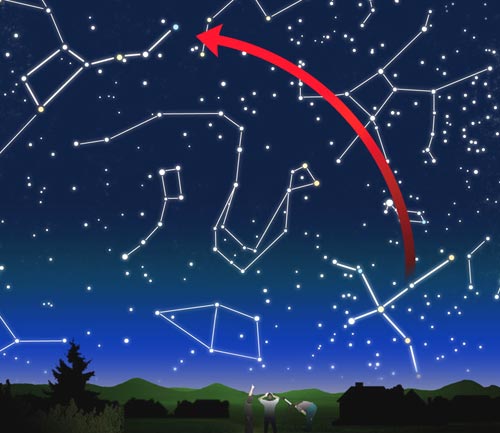A team of astronomers studying radio pulsar B1508+55 has obtained a somewhat surprising result — the star is heading out of the Milky Way Galaxy at the phenomenal velocity of 670 miles per second (1,100 kilometers per second). At this great speed, the galaxy’s gravitational pull is not enough to keep the pulsar within its confines. This means it has, for all practical purposes, been “kicked” out of the galaxy. Such an outcast may belong to a new class of neutron stars that are extremely dense and fast.
Radio astronomers used the National Science Foundation’s Very Long Baseline Array (VLBA) to measure both the star’s motion and the incredibly small wobble in its position caused by Earth’s motion around the Sun. This wobble, called parallax, enabled the group to determine the pulsar’s distance as 7,700 light-years.
Understanding this intergalactic speed-demon is within our reach, however; or so claim several astrophysicists, experts in the theory of pulsars.
A set of models published in 2002 by Z. Arzoumanian of Goddard Space Flight Center and D. Chernoff and J. Cordes, both of Cornell University, suggests the speed distribution of pulsars may have two humps rather than one. In their scenario, the first hump has a maximum speed of around 54 miles/sec (90 km/s), whereas the second — and smaller — hump peaks at around 420 miles/second (700 km/s). B1508+55 would belong to the second hump, with only about 2 percent of all pulsars sharing its speed.
But why should there be two humps in the speed distribution? I. Bombaci of the University of Pisa and S. Popov of the Sternberg Astronomical Institute in Russia think they may have an answer.
Pulsars are neutron stars — stars that have collapsed after exploding as supernovae. Only a few miles across, these stars are greatly compressed; the atoms’ nuclei are crammed together. Many (about 40 percent) travel through space at a few tens of miles per second. Their speed is due to the “kick” imparted by their cataclysmic supernova explosion.
But another class of neutron stars exists, one that is so compressed the atoms are broken down into the basic building blocks of matter — quarks. Making these “quark stars” requires more energy, and, if Bombaci and Popov are right, they receive more of a “kick” when they form.
Another possible scenario has quark stars forming from “normal,” or hadronic, neutron stars by either instability or accretion of mass, in which case, the star gets a second kick that adds to its original speed.
Whether caused by a big initial kick or an additional one, these stars produce the second hump in the speed distribution. It is, therefore, possible that B1508+55 may be a quark star — highly compressed and extremely fast.










